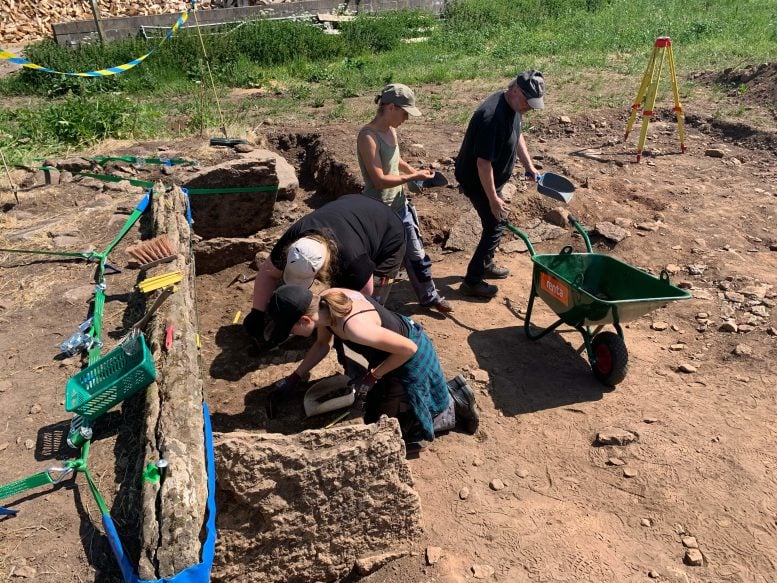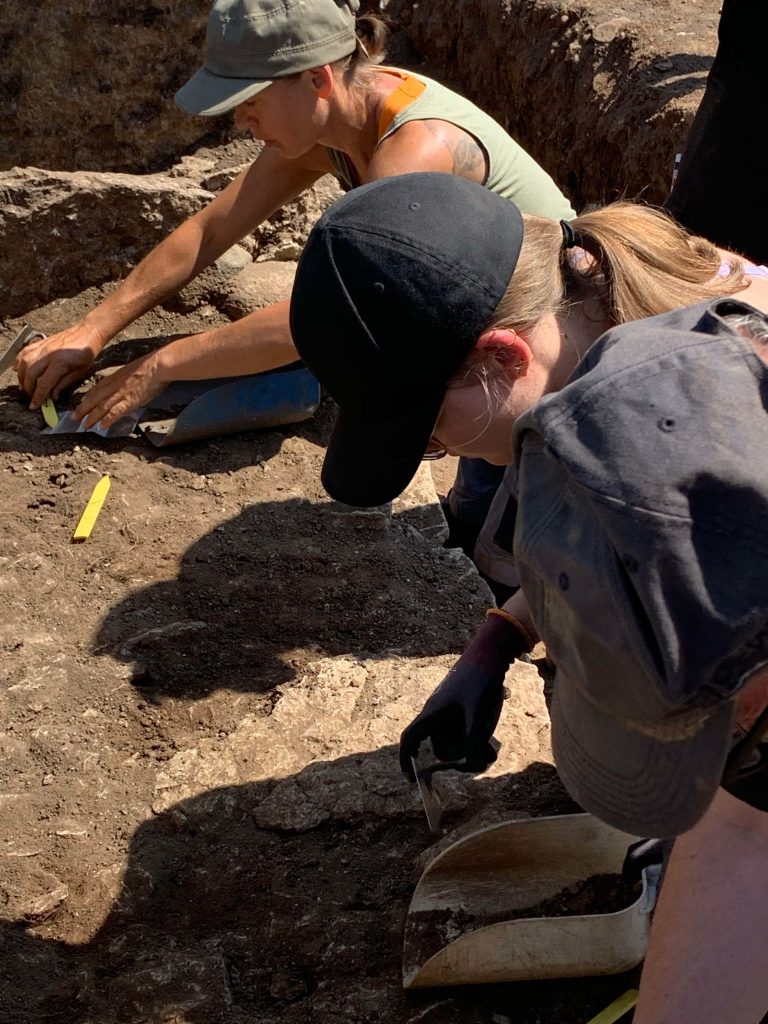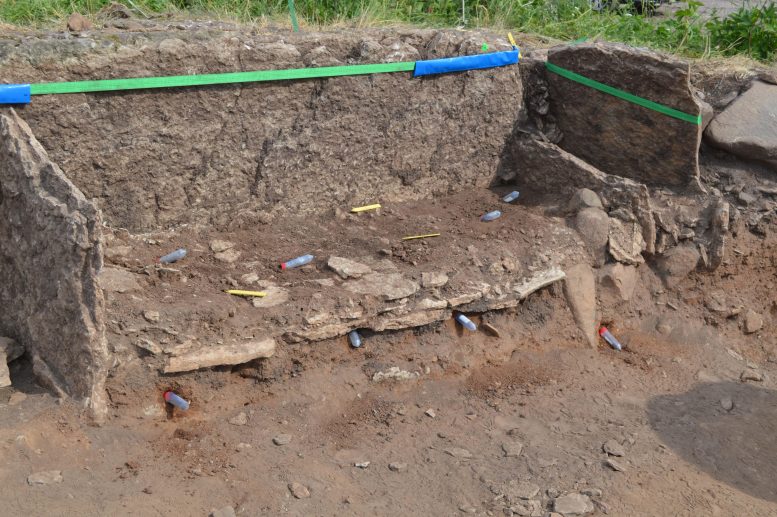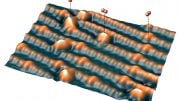
The archaeological excavation in Tiarp in the summer of 2023 was carried out jointly by Gothenburg and Kiel Universities. From left: Julia Dietrich, Ann-Katrin Klein, Malou Blank and Karl-Göran Sjögren. Credit: Cecilia Sjöberg
Archaeologists in Sweden have uncovered a grave in Tiarp, dating back to 3500 BCE, notable for missing skulls and large bones. The grave contains remains from at least twelve individuals, and ongoing DNA research seeks to unravel their familial and health histories.
The first analysis results now confirm that the grave in Tiarp is one of the oldest stone burial chambers in Sweden. “It’s an early grave which dates to the Early Neolithic period, about 3500 BCE,” says archaeologist Karl-Göran Sjögren. The researchers also noted that some parts of the people buried in the grave are missing, such as skulls and thigh bones, posing intriguing questions for archaeologists.
Last summer, archaeologists from Gothenburg University and Kiel University excavated a dolmen, a stone burial chamber, in Tiarp near Falköping in Sweden. The archaeologists judge that the grave has remained untouched since the Stone Age. However, the odd thing is that parts of the skeletons of the people buried are missing.
Skulls and large bones are missing and may have been removed from the grave. We don’t know whether that has to do with burial rituals or what’s behind it,” says Karl-Göran Sjögren.

Last summer, archaeologists from Gothenburg University and Kiel University excavated a dolmen, a stone burial chamber, in Tiarp near Falköping in Sweden. Credit: Cecilia Sjöberg
Now that the researchers have examined the material from the grave, they have found that it contains bones from hands and feet, fragments of rib bones, and teeth. But skulls and larger bones such as thigh and arm bones are very few.
“This differs from what we usually see in megalith graves, i.e. stone burial chambers from the Neolithic period,” Karl-Göran Sjögren explains. “Usually, the bones that are missing are smaller bones from feet and hands.”
Analysis of the Remains
Torbjörn Ahlström, Professor of Osteology at Lund University, studied the bone finds. His conclusion is that the bones come from at least twelve people, including infants and the elderly. But the archaeologists don’t yet know why they died.
“We haven’t seen any injuries on the people buried so we don’t think violence is involved. But we are continuing to study their DNA and that will show whether they had any diseases,” says Karl-Göran Sjögren.

The chamber under excavation. East side mold removed. The plastic tubes are samples for environmental DNA. Credit: Karl-Göran Sjögren
Falköping has long been known for its many passage graves dating from a somewhat later period, approximately 3300 BCE. Agriculture reached Falbygden in about 4000 BCE, i.e. about 500 years before the grave in Tiarp was built. In all likelihood, the people buried in the dolmen were farmers.
“They lived by growing grain and keeping animals and they consumed dairy products,” says Karl-Göran Sjögren.
Are the people buried in the grave related?
A number of samples were taken at the excavation last summer, including DNA from the skeletal remains.
“The preliminary DNA results show that the DNA in the bones is well preserved. This means we will be able to reconstruct the family relationships between the people in the grave and we are working on that now,” says Karl-Göran Sjögren.
Falbygden is known for its many traces of people from the Stone Age. There are more than 250 passage graves here, large graves built of blocks of stone.
“But this dolmen is older. It’s about 200 to 150 years older than the passage graves, making it one of the oldest stone burial chambers in Sweden and across the whole of Scandinavia,” says Karl-Göran Sjögren.
There is another thing that makes the grave unique.
“It’s the way it is constructed. There’s a little niche at each end. This is unique for graves in Falbygden,” says Karl-Göran Sjögren.
Reference: “Tiarp Backgården. An Early Neolithic Dolmen in Falbygden, Sweden and Early Megalithic Tombs in South Scandinavia and Northern Central Europe” by Karl-Göran Sjögren, Malou Blank, Torbjörn Ahlström, Tony Axelsson, Stefan Dreibrodt and Johannes Müller, 22 December 2023, Journal of Neolithic Archaeology.
DOI: 10.12766/jna.2023.8









The skulls(crania) were probably used to drink water or soup.
Damn! I’ve had a bellyful of useless comments from worthless turds. These dumbasses have guts because of anonymity.
Leg was used to carve spiral patterns? Used to make spear head?
Was amputated by a protodoctor because a preditory animal chewed it off? Lions have been know to chew the muscle off that bone.
It may be game hunter victims? Perhaps making bone tools out of your uncles leg wasn’t perceived as dark or scary in those days? Literally hard to perceive from our social norms?
Leg bones are a good strong but of straight useful bone though mind? Any good for composite bows?
Com’on. Skulls have better wear and tear properties than wooden or ceramics back the so we did you them as trinkets. Have you never thought why Hamlet has the skull in his monologue!?!?
Have you ever thought where the expression ”head count” or in Swedish ”huvudnumret” comes from?
A head on a stick or leg bone at the front entrance of the camp. Or maybe 35 severed heads near the gate to drop out a Couple of hints as to the tribes diplomatic stance?
Last and final idea. Sorry for 3 posts.
You said its farmers. I’ll go with that.
Irgot saw to the crops. Forced Canabalism?
I appreciate my ideas seem a dash dark. But since it’s the neolithic period. It’s unlikely not to have been dark scary traumatic right? 🙂
Mind you, would be Flint scrape marks on the bone. Chatter marks.
I love to speculate history. I wish I had your job. Give me the facts to go with it! Cool job. Amazing era of the human race to study! 🙂